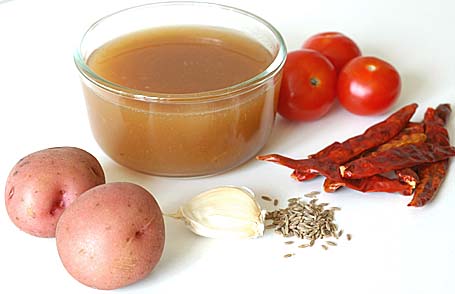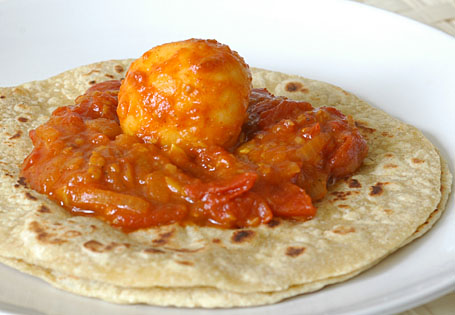We lose by generalizing everything. Unity and showing strong front is important but preserving the diversity and maintaining our own uniqueness is also equally important, I think. Indian cuisine is such a broad term. Can anyone say they know all the regional food varieties of India? I guess not. If we don’t talk about our regional cuisine, who will and how would anyone know about the difference in our cooking. I see lot of new Indian food blogs coming up everyday. Generalize to your heart’s content, but don’t be shy to highlight your regional specialties. That would make the recipe more attractive to the readers and give them the feeling they are trying out something unique, in my view.
See, for example, from India – we go to Andhra Pradesh, my home state in India. Though the general term is Andhra cuisine, there are 3 regions (Rayalaseema, Kosta and Telengana) and each region has its own specialties. Lot of diversity out there, even in one state. Example is this recipe. Cooking vegetables like potatoes etc., in tamarind-chilli sauce is the specialty of Kosta (Coastal region) of Andhra. They call this Tamarind-chilli sauce “Pulusu“. It is the base sauce for all kinds of vegetables, in that region. The saying is, “give something to kosta people, particularly the Nellore district, they would find a way to add tamarind to it”.
The ‘pulusu‘ tastes like as if ‘old western’ kind of faction war happened between tamarind and dried red chillies. To compensate the sourness of tamarind, more hot chillies are added. Unbridled war wages on between these two strong tastes and there is no mediator to calm it down. Thickening agents like coconut or peanut paste are big no or rarely used. The pacifier of course is the poor vegetable that is added. How high this war can go on, which one dominates the taste of ‘pulusu‘ – it all depends on housewife’s mood that day. Imagine sucking on a lime wedge and simultaneously eating a dried red chillie – that’s how this pulusu tastes. You are alerted so prepare it at your own risk.

Recipe:
8 to 10 baby potatoes
1 medium sized onion and 10 to 12 cherry tomatoes – finely chopped
For sauce:
1 cup of tamarind juice – (medium thick – home made version)
6 dried red chillies+3 garlic cloves+1 teaspoon of cumin – Make a smooth paste of them.
1/4 teaspoon of turmeric and salt to taste
Popu or tadka ingredients:(1tsp of each, cumin, mustard seeds and few curry leaves)
Boil potatoes in water, just until tender. Remove them and strip the outer skin. Prick the potatoes in multiple sites with a fork so that they can absorb the sauce.
In a big pan or kadai – heat one teaspoon of peanut oil. Do the popu or tadka (toast mustard seeds, cumin, curry leaves). Saute onions and tomatoes for few minutes until they soften. Stir in red chilli paste; saute it for few minutes until it leaves the raw smell. Add the tamarind juice and another cup of water. Stir in salt and turmeric and also the pricked potatoes. Cover and simmer them for about 15 to 20 minutes on medium heat, stirring in between. Wait until the sauce reaches the consistency of thick lava. Turn off the heat, and serve the pulusu with chapatis or with rice and ghee.

Baby potatoes in tamarind-chilli sauce and chapatis
I’ve added a tablespoon of powdered jaggery to this curry, forgive me my dear Nellore friends and readers. I know you will sneer at me, I know it is a big no-no, adding any kind of sweetener to the curry. But my poor body won’t tolerate that kind of slow burning heat.
This is my entry to “The Spice is Right – Ancient Spices” food blog event, started and hosted by my favorite food blogger, very talented chef Barbara of Tigers and Strawberries.
